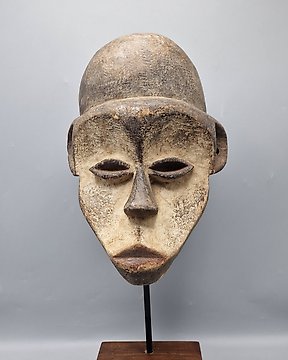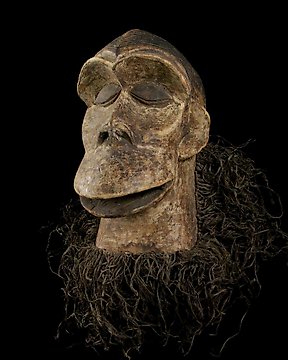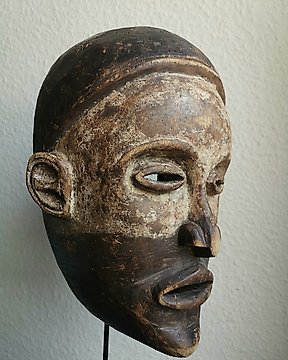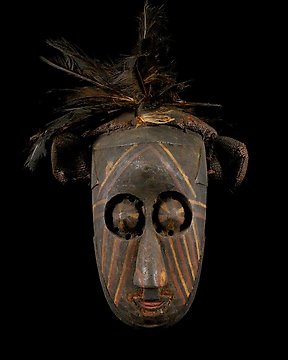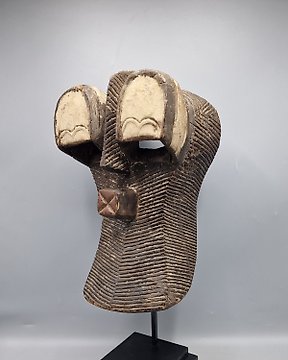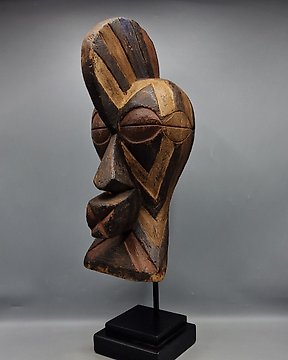Große Stierma-Umstandsmode - Kongo - DR Kongo
Nr. 83434221

Kopf - Hemba - DR Kongo
Nr. 83434221

Kopf - Hemba - DR Kongo
A fragmented Hemba head, placed on a stand, oval shaped head, the mouth and the end of the jaw, a pointed nose, two almond shaped eyes, a small forehead, ears positioned at a lower angle, the hair is pulled back in the Hemba style; some cracks, traces of use, signs of use. Certificate of provenance.
“The traditional African Hemba art, from territories long banned for a long time, was little known in the West until its triumphant appearance through collections in the early 1970s. Among the Hemba, ancestor worship takes precedence over other values of society and this priority is sensitive in sculpture. The artists, often grouped in workshops, perform images of their ancestors. These figures are ritually present during clan ceremonies. This statuary quality is often highlighted by a beautiful patina. Primarily, the Hemba tribal art was related to the Luba style, but for some time it has been recognized for its own qualities as a distinct style.”
References:
Relics and effigy of ancestors, in CONGO River, Francois Neyt, Quais Branly Museum, p. 254-255
"Die Skulpturen der Hemba zählen zu den bedeutensten Kunstwerken Schwarzafrikas; es sind vor allem Ahnenfiguren, singiti, die Kriegsfürsten, Gründer von Königsfamilien, oder lokale Häuptlinge darstellen und die in kleine Hüttengestellt werden." Schaedler, 180.
Lit.: K.-F. Schaedler, Lexikon afrikanische Kunst und Kultur, 180f. Evan Maurer, The Intelligence of Forms, 1991. Luigi Spina, Hemba, 2018. Francois Neyt, La grande statuaire hemba du zaire, 1977. Francois Neyt / Louis de Strycker, approche des arts hemba, 1975. Francois Neyt, South East Zaire, 1993, 163-181.
Das könnte Ihnen auch gefallen
- 16+
Dieses Objekt wurde vorgestellt in:
So kaufen Sie auf Catawiki
1. Etwas Besonderes entdecken
2. Höchstgebot abgeben
3. Sichere Zahlung durchführen

